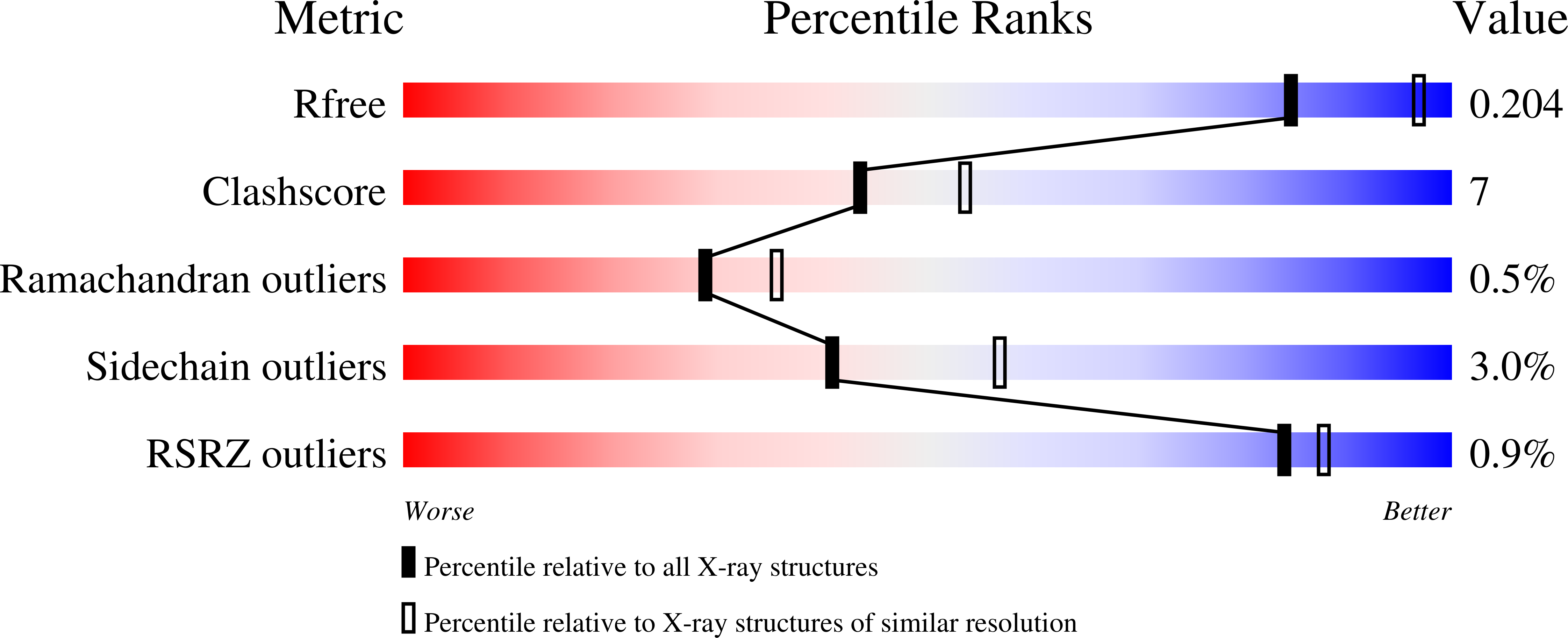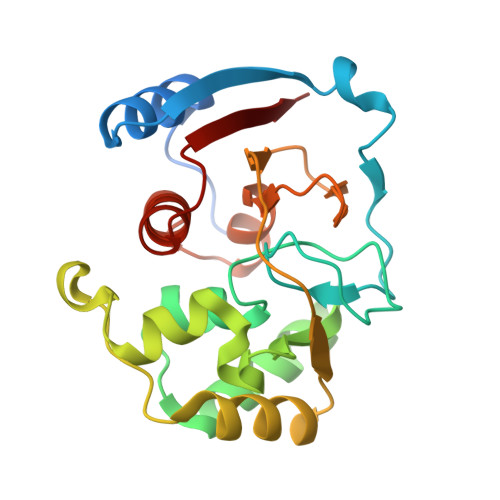Structural and inhibition insights into carbonic anhydrase CDCA1 from the marine diatom Thalassiosira weissflogii.
Alterio, V., Langella, E., Viparelli, F., Vullo, D., Ascione, G., Dathan, N.A., Morel, F.M., Supuran, C.T., De Simone, G., Monti, S.M.(2012) Biochimie 94: 1232-1241
- PubMed: 22381359
- DOI: https://doi.org/10.1016/j.biochi.2012.02.013
- Primary Citation of Related Structures:
3UK8 - PubMed Abstract:
Carbonic anhydrases (CAs) catalyze with high efficiency the reversible hydration of carbon dioxide, an essential reaction for many biological processes, such as photosynthesis, respiration, renal tubular acidification, and bone resorption. Diatoms, which are one of the most common types of phytoplankton and are widespread in oceans, possess CAs fundamental for acquisition of inorganic carbon. Recently, in the marine diatom Thalassiosira weissflogii a novel enzyme, CDCA1, naturally using Cd in its active site, has been isolated and categorized in a new CA class, namely zeta-CA. This enzyme, which consists of three repeats (R1, R2 and R3), is a cambialistic carbonic anhydrase that can spontaneously exchange Zn or Cd at its active centre, presumably an adaptative advantage for diatoms that grow fast in the metal-poor environment of the surface ocean. In this paper we completed the characterization of this enzyme, reporting the X-ray structure of the last repeat, CDCA1-R3 in its cadmium-bound form, and presenting a model of the full length protein obtained by docking approaches. Results show that CDCA1 has a quite compact not symmetric structure, characterized by two covalently linked R1-R2 and R2-R3 interfaces and a small non-covalent R1-R3 interface. The three dimensional arrangement shows that most of the non-conserved aminoacids of the three repeats are located at the interface regions and that the active sites are far from each other and completely accessible to the substrate. Finally, a detailed inhibition study of CDCA1-R3 repeat in both cadmium- and zinc- bound form has been performed with sulfonamides and sulfamates derivatives. The results have been compared with those previously reported for other CA classes, namely alpha- and beta-classes, and correlated with the structural features of these enzymes.
Organizational Affiliation:
Istituto di Biostrutture e Bioimmagini-CNR, via Mezzocannone 16, 80134 Naples, Italy.
















